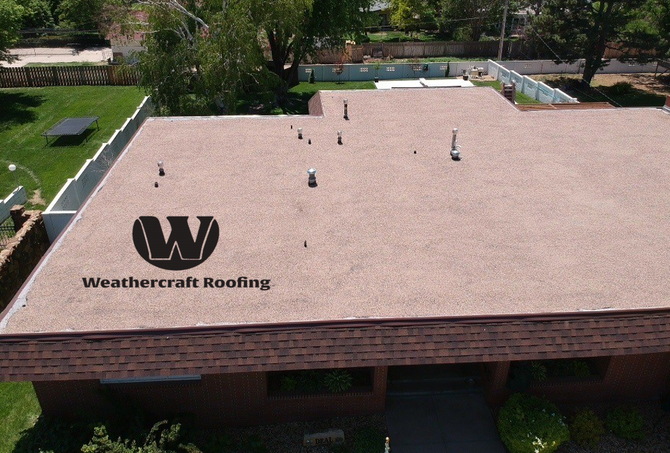Increasingly favored for commercial properties, flat roofs offer several benefits like reduced costs, easy upkeep, and increased functionality. This article will delve into why flat roofs are an ideal choice for your building, showcasing how they save both money and time over the long term.
The Benefits of Flat Roofs for Your Commercial Property
Flat roofs offer significant advantages for commercial buildings, including easier installation. Since they are quicker to install than pitched roofs, flat roofs help reduce labor costs and installation time, making them a practical and efficient choice for commercial properties.
Flat roofs allow you to make the most of your available space. Since the roof is flat, it can be used for other functional purposes, including the installation of HVAC units, solar panels, or even creating a rooftop garden. This is particularly beneficial for commercial buildings in space-constrained urban areas.
Flat Roof Materials: EPDM, TPO, and PVC
When it comes to flat roofing, there are several high-quality materials to choose from, each offering unique benefits. Here are the most commonly used materials for commercial flat roofs:
EPDM: The Durable Flat Roofing Solution
EPDM is a synthetic rubber material that is known for its durability and weather resistance. It’s particularly effective in extreme weather conditions, making it a great option for flat roofs in both hot and cold climates. EPDM is also easy to install and maintain, providing long-term protection against leaks.

TPO (Thermoplastic Olefin)
TPO is a reflective material that boosts energy efficiency by reducing heat absorption. It’s ideal for areas with strong sun exposure due to its UV and ozone resistance. TPO also offers great puncture resistance and is durable in extreme weather.
PVC (Polyvinyl Chloride)
PVC is a strong, durable material that’s resistant to water, fire, and chemicals. It’s known for its longevity and is often used in high-traffic areas due to its superior resistance to wear and tear. PVC is a great option for flat roofs that require extra protection against the elements and heavy use.
Maintenance Tips for Flat Roofing Longevity
While flat roofs are durable, they still require regular maintenance to ensure their longevity. Here are a few maintenance tips to keep your commercial flat roof in top condition:
- Make sure to inspect your roof frequently for debris that could clog drainage systems, such as leaves or branches.
- Keep gutters and downspouts clear of blockages to avoid water accumulation.
- Schedule annual roof inspections with a professional roofing contractor to check for signs of wear and tear.
- Address any necessary repairs quickly to prevent further damage, particularly if there are cracks or punctures.
The Long-Term Cost Benefits of Flat Roofs
One of the most compelling reasons to choose a flat roof for your commercial property is its cost-effectiveness. While the initial installation cost is generally lower than pitched roofs, flat roofs are more affordable to maintain in the long run. They are easier to inspect, repair, and replace, which can save you significant money on maintenance over time.
The flat roof space can be used for a range of purposes like installing solar panels or additional units, which can result in long-term energy savings. In many instances, flat roofs also help reduce heating and cooling costs by improving insulation.
Choosing the Right Flat Roof for Your Commercial Property
Flat roofs provide excellent value for commercial properties by offering benefits like cost savings, low maintenance, and versatility. By selecting the appropriate roofing material and ensuring proper maintenance, you can extend the life of your flat roof and ensure lasting value for your business.
Looking for expert advice on flat roofing? Reach out today for a consultation, and let us help you find the perfect flat roofing solution for your commercial property!
#FlatRoofing #CommercialRoofing #RoofInstallation #EPDM #TPO #PVC #RoofMaintenance #EnergyEfficiency #BusinessRoofing